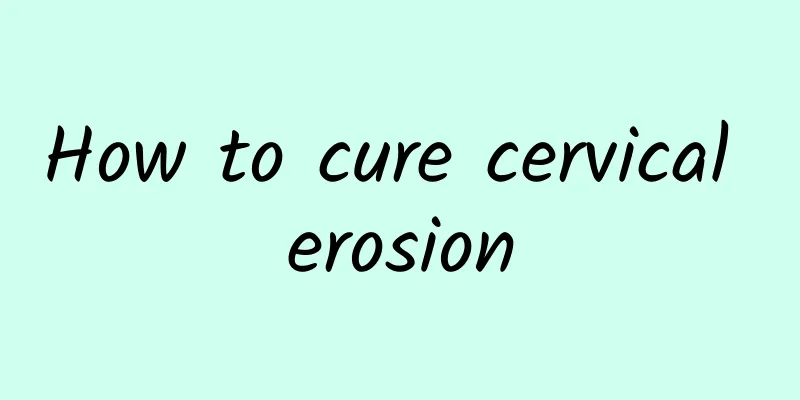What is the principle of TCM treatment for Bartholinitis?

|
Although Bartholinitis itself is not contagious, women are extremely afraid of it, so it is very important for women to know some methods to treat it. Bartholinitis is one of the common types of gynecology, and there are countless ways to treat it, but from ancient times to the present, most patients with Bartholinitis have been treated with folk remedies and traditional Chinese medicine. In our lives, female compatriots suffering from Bartholinitis can be seen everywhere, which shows that this disease is indeed a high incidence among gynecological diseases. Bartholinitis, a gynecological disease, not only makes women feel ashamed, but also poses a great safety hazard to women's health, so the treatment of Bartholinitis is urgent. Today, the editor will introduce several methods of TCM treatment of Bartholinitis to everyone, I hope you can refer to it. Principles of TCM treatment: clearing away heat and detoxifying, resolving blood stasis and discharging pus. TCM treatment method 1 for Bartholinitis: Wuwei Xiaoduyin. The Chinese medicinal materials included in this TCM method mainly include Tiankuizi, Dandelion, Moutan Cortex, Diding, Red Peony Root, Frankincense, Forsythia, Honeysuckle, Myrrh, etc. Then put the above Chinese medicinal materials in a basin and wash them clean, and then let women with Bartholinitis take this Chinese medicinal treatment method orally. It can clear away heat, detoxify and promote blood circulation, so it is often used to treat Bartholinitis. Method 2 of TCM treatment for Bartholinitis: Xianfang Huomingyin. The main medicinal materials included in Xianfang Huomingyin are honeysuckle, fangfeng, anemarrhena, frankincense, radix trichosanthis, fritillaria, red peony root, myrrh, pangolin, tangerine peel, fangfeng, and sapodilla thorn. The most significant effect of this Chinese medicine treatment method is to dissolve blood stasis and discharge pus, so patients with Bartholinitis can treat symptoms such as vulvar edema after using it. Precautions for Bartholinitis: There are many issues that patients with Bartholinitis need to pay attention to. Patients must pay attention to hygiene at ordinary times, and the vulva must be kept clean. Underwear must be made of cotton, not fiber underwear. Patients with Bartholinitis also need to change their underwear frequently. After reading the above introduction, everyone must have a clearer understanding of the TCM treatment methods and precautions for Bartholinitis. Although the TCM treatment methods for Bartholinitis are effective, the drugs in the article also need to be used under the doctor's advice. For patients with Bartholinitis, although treatment cannot be delayed, patients also need to pay attention to hygiene during the treatment process. Paying more attention to these small things in daily life can also greatly help the treatment of Bartholinitis. |
<<: How to treat Bartholinitis for better health
>>: Treatment of Bartholinitis with Chinese Medicine Bath and Fumigation
Recommend
How to treat cervical warts
As we all know, cervical warts can cause great ha...
What to eat for dysmenorrhea
The pain of dysmenorrhea can last from one or two...
What should women do if their menstrual flow is heavy?
What should women do if they have heavy menstrual...
One curry a day with curcumin to prevent cardiovascular inflammation
When talking about India, it is hard not to think...
What happens if you get pregnant with a thick endometrium?
Children nowadays are the hope of a family. Many ...
How to massage which acupoints for irregular menstruation
Irregular menstruation is one of the common disea...
How long does it take to get the abortion pills? What are the processes of medical abortion?
If a woman gets pregnant unexpectedly before she ...
Build a physique that won’t easily gain weight! 10-Day Intensive Weight Loss Method
If you want to focus on losing weight, you may sp...
What are the common conditions that cause menstrual disorders in women?
What are the common cases of menstrual disorders ...
You tap the gallbladder meridian every day, but edema still occurs frequently? If you neglect to pay attention to the details, the effect of reducing edema will be halved!
You tap the gallbladder meridian every day but yo...
Specific symptoms of cervical precancerous lesions
The early lesions of cervical cancer are quite ob...
What are the remedies for abortion headaches? Avoid eating 3 types of food when you have pain after abortion
Abortion is a painful and harmful choice for wome...
What are the factors that cause miscarriage? There are 4 major factors
The main factors that induce miscarriage are embr...
What are the signs of miscarriage?
Premature birth is very common. For women who are...
Symptoms of ectopic pregnancy can cause severe abdominal pain
The accelerated pace of social life has made it d...









